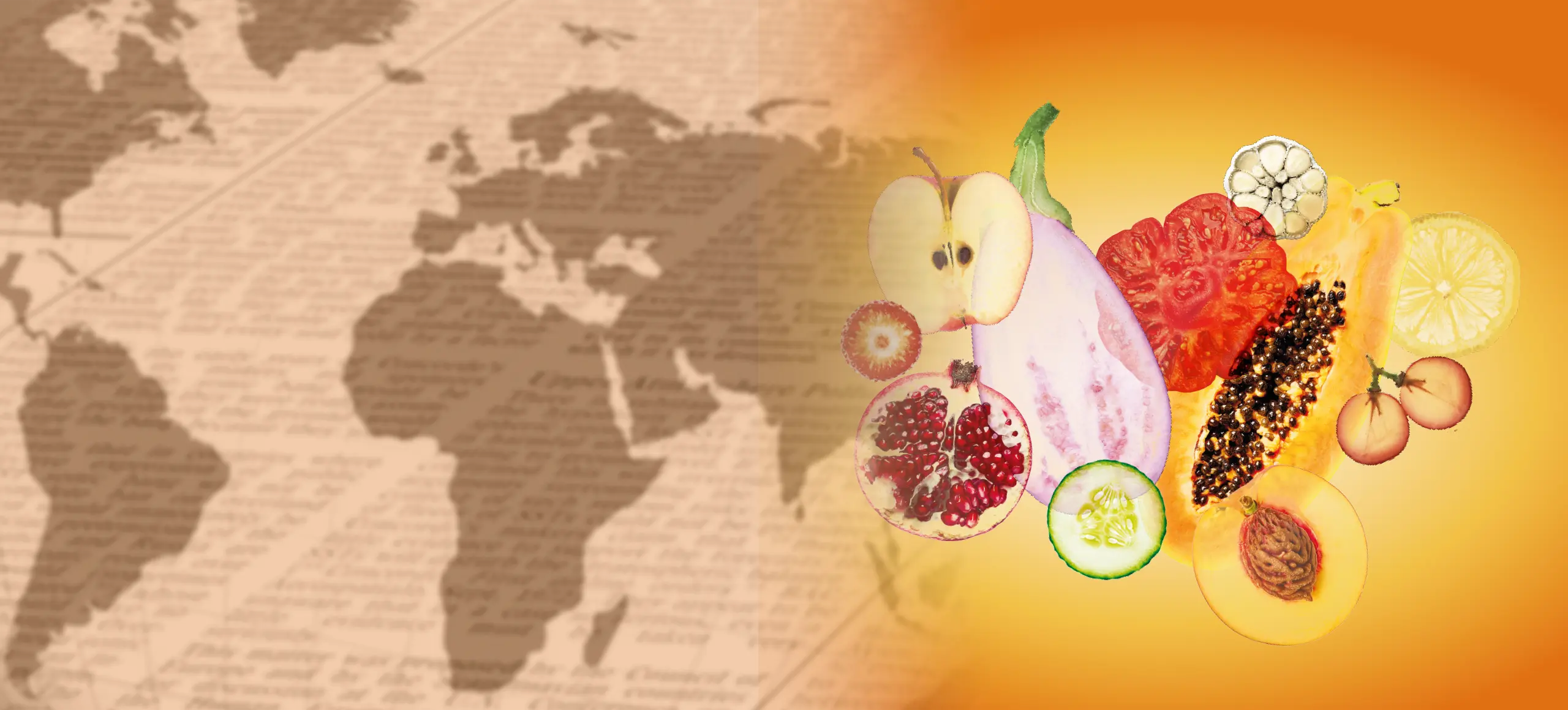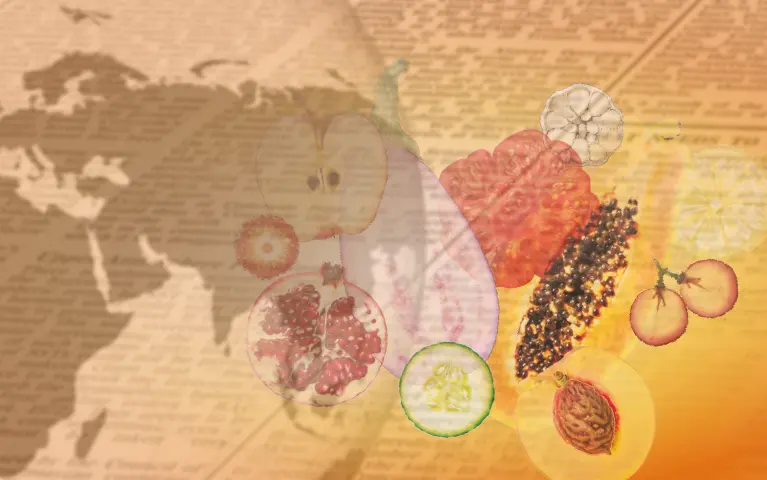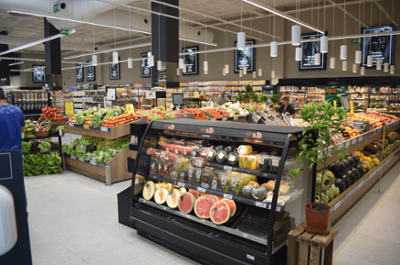

Fruit and Vegetables in retail: A section with its own personality

In order to satisfy an increasingly demanding and informed customer, the fruit and vegetable section has undergone a profound transformation. Thus, among other actions, these sections have been reconverted to present themselves as a differentiated space within the supermarket with furniture where wood is the priority and an assortment that not only gains in depth, but also in diversity, without losing sight of sustainability. In this article you will discover the key factors that are revolutionising the fruit and vegetable area in retail.
La sección de frutas y hortalizas ha experimentado en los últimos años un cambio radical para atraer a nueva clientela. Una revolución que ha afectado tanto al mobiliario -de madera-, como al surtido, que gana en profundidad y variedad de referencias y formatos. Todo ello con el objetivo de adaptarse a un consumidor cada vez más informado y exigente que, además, no pierde de vista la sostenibilidad.
Tras años de estanterías metálicas en los que las secciones de frutas y hortalizas eran, básicamente, una continuación del resto de lineales del establecimiento, en la actualidad, los operadores quieren romper este lay out tradicional de pasillos con la creación de espacios diferenciados dentro del propio establecimiento, en los que sobresale la cuidada disposición del género y el mobiliario. A este cambio de tendencia ha contribuido la importancia de las frutas y verduras como tractor de las visitas a tienda. Además, el pasado año repitieron como los productos frescos con más presencia (63%) y gasto (53%) en la cesta de la compra de los hogares españoles, según se desprende del ‘VI Observatorio de Frescos’, elaborado por Aldi con el soporte de Kantar Worldpanel.
A grandes rasgos, los muebles han cambiado el metal por la madera, ya que este material transmite mayor sensación de naturalidad y calidez, normalmente en tonos claros, aunque existen excepciones, como el caso de Ahorramas (que utiliza negro y amarillo). En cuanto a su disposición, el espacio suele configurarse en torno a una o varias góndolas centrales, con una altura óptima para el cliente, que recogen las referencias más populares, así como las ofertas o las novedades. Rodeando a estos muebles, encontraríamos varias estanterías verticales y un mueble de frío positivo cerrado con puertas (también vertical) que, además, delimitan este universo).
One of the latest companies to join this trend is the Hiperber group from Elche which, in its own words, is incorporating ‘special furniture in its supermarkets to make the section more attractive and make shopping easier’. Also from Cash Lepe, their Purchasing Manager, Jonathan Tinoco explains that they ‘continue to work’ on modernising their fruit and vegetable sections ‘creating a more accessible and comfortable space, with a continuous expansion of our assortment’.
Added systems and services
A second widely used resource for the creation of their own spaces is the incorporation of a false ceiling of slats -usually made of PVC and with a wooden finish, although they can also be made of metal-, in which lighting systems based on LED spotlights are integrated. Other innovations that have been gaining ground include nebulisers or water vaporisation systems for those references that require greater hydration, natural orange or pomegranate juice machines, which have begun to be joined by freshly cut pineapple, and bulk dry fruit dispensers, among others.
At the same time, consumers are beginning to be provided with ‘extra’ information about the food they are going to buy. Thus, electronic labels or small informative signs indicate, in addition to the price, other complementary information of interest (origin, variety or weight). Some companies, such as Ahorramas or Uvesco, have gone a step further with the inclusion of pictograms which, by means of drawings representing the different degrees of ripeness of a specific fruit, indicate whether it should be consumed on the same day of purchase, in one or two days or in the following four or five days.
Focus on innovation
Aesthetic issues aside, the sector continues to be immersed in responding to emerging consumer trends through innovation. Here, the workhorses are numerous, but the most important would be to have an assortment with great depth and variety. In an increasingly globalised world, consumers want to experiment and try new flavours. Thus, the traditional range is being completed with tropical fruits (avocado, papaya, mango, papayon, etc.), while the pre-prepared and pre-cooked convenience food range continues to expand with new mixes of salads, ready-to-eat peeled and cut fruit and vegetables, etc.).
Fruit and vegetable-based specialities (toppings, preparations for making creams or purées, aromatic herbs, edible flowers, dehydrated products or products suitable for vegans or vegetarians) have also significantly strengthened their catalogue. Finally, traditional fruit and vegetables (which are a must) are now available in new varieties (grapes or seedless watermelons) and formats for all types of families.
In this sense, Víctor José Ayllon, Director of Fruit and Vegetables in Carrefour Spain, explains that his sections ‘are always constantly adapting to changes in the market’. Proof of this, according to this manager, is the renovation of the pre-prepared and pre-cooked convenience food range, which is now ‘more efficient’. At the same time, the group has developed vertical gardens of aromatic plants ‘in some of our shops’, or savings formats such as a 10kg sack of potatoes for its own brand.
Likewise, proximity is becoming, year after year, a ‘relevant’ factor when it comes to shopping, according to the Aldi study. Thus, 82% of consumers prioritise products of national origin and 74% those from their own region. In fact, these products, which tend to be seasonal, usually have a specific sales area: El Corte Inglés has ‘La Huerta de Carabaña’; Alcampo, with ‘Hortalizas de la Comunidad de Madrid’; and Uvesco, with ‘Caserío y Temporada’ and ‘Bertako/de aquí’. For its part, Aldi claims that more than 65% of its fruit and more than 85% of its vegetables come from the Spanish market garden. In this sense, in 2024 it plans to purchase around 40,000 tonnes of fruit from Spanish suppliers.
In addition, these foods fit very well with another priority for customers: sustainability. Again based on the Aldi report, more than half of consumers prioritise seasonal products (56%) and opt for bulk or items with less plastic in the packaging (51%). Here, the measures taken by the national retailer are, on the one hand, retailing and, on the other hand, working together with its suppliers to reduce packaging, either by using less plastic or by replacing it with certified paper, cardboard packaging, vegetable paper or other sustainable materials.





